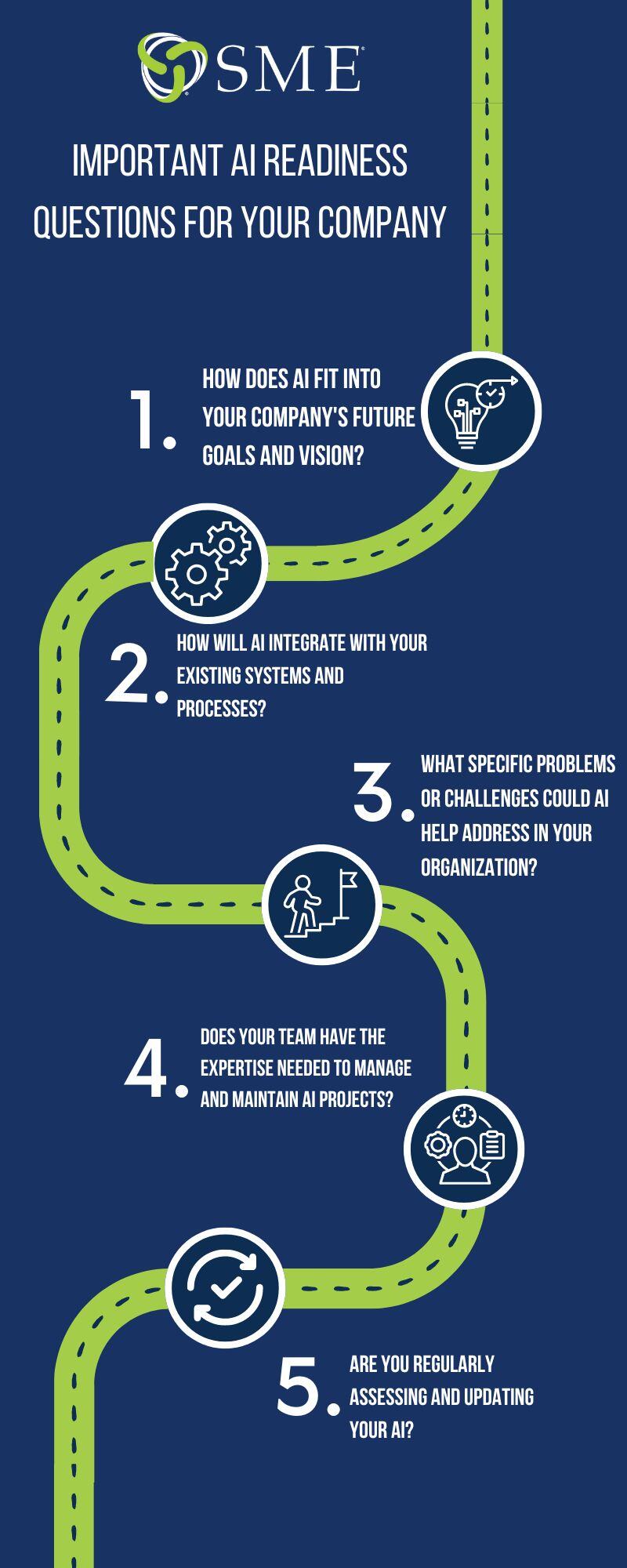As we like to say, garbage in, garbage out. Normally when we say this, we are referring to data quality issues feeding into your analytics and resulting in untrustworthy insights. This concept holds true for Artificial Intelligence (AI) implementation. So when you are assessing your AI readiness and how LLMs could play into your business, remember "Don't Feed Your LLM Garbage: Data Organization is Key to AI Success."
Large Language Models (LLMs) are like hungry learners, constantly devouring data to become smarter and more versatile. But just like with any student, what they're fed directly impacts their output. Here's where the glamorous facade of AI crashes into reality: garbage in, garbage out.
This blog post cuts through the hype and emphasizes the crucial, often overlooked, step of data organization and governance before unleashing your LLM on the world.
Why a Single Source of Truth Matters:
Imagine teaching a language student from multiple, disconnected textbooks. Conflicting information, inconsistencies, and missing context would hinder their learning. That's what happens when LLMs deal with siloed data: inconsistent outputs, biased results, and ultimately, wasted time and resources.
Inconsistent Outputs:
- Data Fragmentation: LLMs trained on segmented datasets may lack the holistic understanding needed for consistent responses. Imagine learning French from one book focusing on formal vocabulary, another on slang, and none on grammar. The student's output would be inconsistent and confusing.
- Conflicting Bias: Different datasets often harbor inherent biases. LLMs trained on such data can amplify these biases, leading to inconsistent and potentially harmful outputs.
- Domain Mismatch: Applying an LLM trained on general text to a specific domain (e.g., legal documents) can lead to nonsensical outputs due to a lack of domain-specific knowledge.
Biased Results:
- Algorithmic Bias: Bias can creep into the training data, algorithms, and evaluation metrics used to train LLMs, leading to biased outputs that reflect these prejudices.
- Data Imbalance: If certain perspectives or demographics are underrepresented in the training data, the LLM's outputs might favor the overrepresented groups, perpetuating bias.
- Selection Bias: The way data is curated and presented for training can introduce bias, influencing the LLM's understanding of the world.
Wasted Time and Resources:
- Inefficient Training: Training LLMs on siloed data requires more resources and time to achieve optimal performance compared to using unified datasets.
- Error Correction: Inconsistent, biased, or inaccurate outputs necessitate manual correction and debugging, wasting valuable time and resources.
- Missed Opportunities: LLMs with limited access to comprehensive data lack the full potential to generate creative, insightful, and informative outputs.
Data Lakes and Warehouses: Your LLM's Knowledge Hub
Think of a data lake or warehouse as a well-organized library for your LLM. It stores all the data – structured, unstructured, and everything in between – in a single, accessible location. This allows the LLM to learn from diverse sources, connect information, and generate more comprehensive and meaningful results.
At SME Solutions Group, we have a lot of customers using Snowflake, Microsoft Fabric, and Databricks as their data lake or data warehouse. We find that data lakes and data warehouses offer functionalities and access control features that can be leveraged to integrate data governance for LLMs in several ways:
Secure Data Access for Training:
- External Storage: Connect to cloud storage like AWS S3 or Azure Blob Storage where training data resides. Ensure role-based access control (RBAC) restricts access to authorized entities.
- Virtualized Compute: Utilize scalable compute resources for LLM training and prompt execution, granting LLM's secure access to data that fall within SLAs.
Data Governance Framework:
- Granular Access Control: Implement RBAC to define roles with specific privileges for different data segments. This controls what data LLMs can access and manipulate for generation.
- Data Subsets: Create views or materialized views to provide LLMs with access to specific data subsets, filtering sensitive information and limiting the scope of data used.
Monitoring and Auditing:
- Data Lineage Tracking: Track data flow from ingestion to usage, understanding how data used by LLMs originated and transformed.
- Query History and Access Logs: Monitor LLM interactions with data through platform audit logs. This reveals how LLMs use data and helps identify potential misuse.
Integration with External Tools:
- Connector Libraries: Utilize platform-specific connector libraries or open-source options to interact with data from popular environments like Python, where LLM training and experimentation often occur. These connectors enforce access control through assigned roles and permissions.
-
- Open-Source Processing Engines: Leverage open-source SQL execution engines like Spark or Trino alongside LLM frameworks like TensorFlow or PyTorch. This enables advanced data processing and analytics while adhering to platform data governance features.
Data warehouses and data lakes like Snowflake, Redshift, BigQuery, and others offer a foundation for secure and governed LLM development and deployment. By utilizing platform-specific features like RBAC, data subsetting, lineage tracking, audit logs, and connector libraries, organizations can ensure responsible use of LLMs with appropriate data access and control.
Remember, data governance is an ongoing process. Continuously monitoring and adapting your approach is crucial as your LLM evolves and your data needs change.
Write-Access is Essential for Continuous Learning
Your LLM doesn't just learn once; it continuously evolves. So, ensuring write-access to the data repository is crucial. This allows you to feed the LLM new information, correct errors, and refine its understanding over time. However, write access should be isolated in order to not overwrite or modify existing data.
While continuous learning through write-access to the data repository is vital for refining the LLM's understanding, it's crucial to consider the compute cost implications. Every update, correction, or new piece of information requires running the training algorithms again, potentially on massive datasets. This can quickly rack up significant expenses, especially for large and complex models.
Data Quality is Key
Remember, even the best library can't work with messy textbooks. Before connecting your LLM, invest in data organization and governance. This includes:
- Data cleaning: The unsung hero of analysis, tackles the messy reality of raw information. It's the process of transforming that tangled mess into a reliable and usable resource by fixing errors like typos and outliers, resolving inconsistencies in formatting and terminology, and addressing missing values that often plague datasets.
- Data labeling: It's not just about adding tags; it's about breathing life into raw information. This crucial step adds context and meaning, transforming silent data into a language machines and humans can understand. Like meticulously organizing a library with clear labels, data labeling categorizes content, highlights key themes, and even captures sentiment. This doesn't just make retrieval easier; it unlocks the potential for advanced analysis. Labeled data serves as the training ground for machine learning algorithms, allowing them to learn, adapt, and ultimately extract valuable insights from the data jungle. It forms the backbone of the semantic layer.
- Data governance: The guiding force for managing an organization's information assets. It establishes a framework of rules and processes that ensure data security, privacy, and quality throughout its lifecycle. This framework encompasses various aspects, including defining who can access and modify data, implementing protocols for data protection and encryption, and setting standards for data accuracy and consistency. Regular data quality checks and audits become crucial under data governance, guaranteeing the information used for decision-making is always reliable and trustworthy. It also addresses privacy concerns by establishing regulations for data collection, usage, and storage, ensuring compliance with relevant laws and ethical practices. Ultimately, data governance fosters a culture of responsible data management, where information is treated as a valuable asset to be protected and utilized effectively.
Identifying data governance stewards and stakeholders who understand your specific domain and data landscape is crucial for establishing an effective data governance program, whether it be for BI, AI, or both!
Don't Skip The Data Organization and Governance Step: It's Not Worth the Risk. Starting AI without data organization and governance is like building a house on a shaky foundation. It might seem quick and exciting at first, but eventually, it crumbles. Remember, investing in data preparation isn't glamorous, but it's essential for sustainable and successful AI implementation.
Get In Touch With Us Today
.png?width=700&height=127&name=Blue%20Mantis%20formerly%20known%20as%20SME%20Solutions%20Group%2c%20Inc.%20(GREEN).png)

.jpg)



